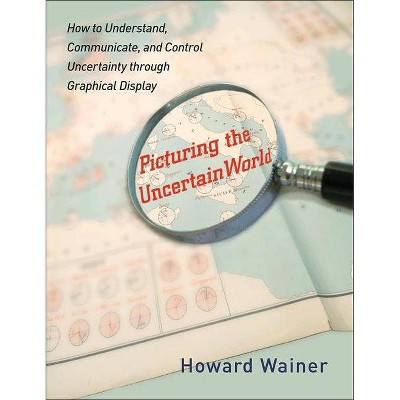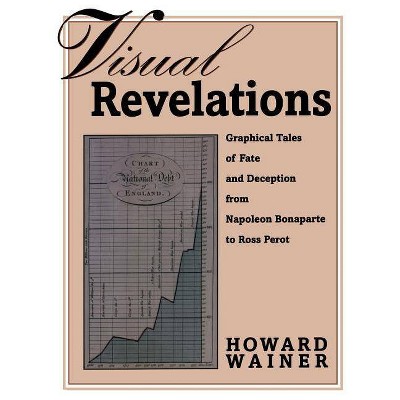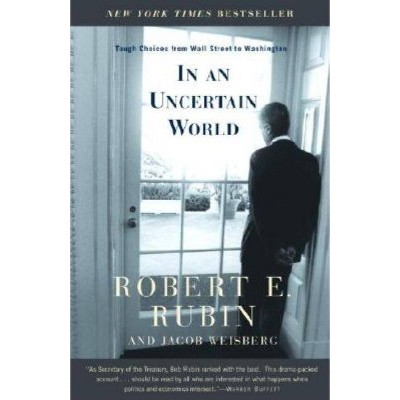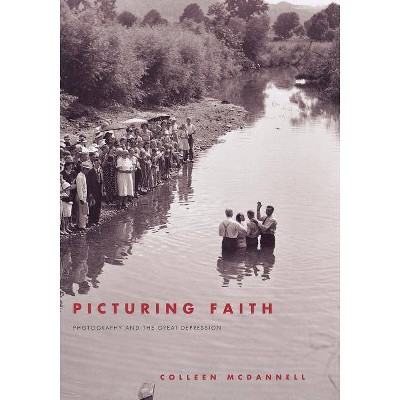Picturing the Uncertain World - by Howard Wainer (Paperback)

Similar Products
Products of same category from the store
AllProduct info
<p/><br></br><p><b> Book Synopsis </b></p></br></br><p>In his entertaining and informative book <i>Graphic Discovery</i>, Howard Wainer unlocked the power of graphical display to make complex problems clear. Now he's back with <i>Picturing the Uncertain World</i>, a book that explores how graphs can serve as maps to guide us when the information we have is ambiguous or incomplete. Using a visually diverse sampling of graphical display, from heartrending autobiographical displays of genocide in the Kovno ghetto to the Pie Chart of Mystery in a <i>New Yorker</i> cartoon, Wainer illustrates the many ways graphs can be used--and misused--as we try to make sense of an uncertain world. <p/><i>Picturing the Uncertain World</i> takes readers on an extraordinary graphical adventure, revealing how the visual communication of data offers answers to vexing questions yet also highlights the measure of uncertainty in almost everything we do. Are cancer rates higher or lower in rural communities? How can you know how much money to sock away for retirement when you don't know when you'll die? And where exactly did nineteenth-century novelists get their ideas? These are some of the fascinating questions Wainer invites readers to consider. Along the way he traces the origins and development of graphical display, from William Playfair, who pioneered the use of graphs in the eighteenth century, to instances today where the public has been misled through poorly designed graphs. <p/> We live in a world full of uncertainty, yet it is within our grasp to take its measure. Read <i>Picturing the Uncertain World</i> and learn how.</p><p/><br></br><p><b> From the Back Cover </b></p></br></br><p>"Wainer's book is a delight to read. Readers will come away with a clear understanding of how uncertainty, properly measured, can help us make decisions and can provide a skeptical aura about the facts behind those decisions. Wainer's examples show how statistical reasoning is needed to make sense of what our observations tell us. This book offers insights beyond what is usually taught in statistics courses."<b>--David Salsburg, author of <i>The Lady Tasting Tea: How Statistics Revolutionized Science in the Twentieth Century</i></b></p><p>"An entertaining and thought-provoking book. From displaying the Medicare drug benefit and trends in test scores and school spending, to unraveling Freedle's folly, Howard Wainer tells story after story about the understanding and display of variation."<b>--Andrew Gelman, author of <i>Red State, Blue State, Rich State, Poor State</i></b></p><p>"Feel like you're drowning in data? Howard Wainer is an enthusiastic advocate for graphs and statistics' ability to clarify complexity. His essays illustrate how to exploit the possibilities--and avoid the pitfalls--in presenting information so that it is actually informative."<b>--Joel Best, author of <i>Stat-Spotting: A Field Guide to Identifying Dubious Data</i></b></p><p>"This book offers lessons on the effective presentation of numbers and how to avoid common mistakes in interpreting statistical information. At a time when statisticians are in an arms race to develop ever more complex and impenetrable statistical formulations, Wainer teaches that the purpose of statistics is to make the complex simple. He is one of the few recognized authorities on the presentation of numerical evidence."<b>--Gary M. Klass, author of <i>Just Plain Data Analysis</i></b></p><p>"It was a real joy to read Wainer's book. Its great strengths are the interesting examples, the insightful and instructive analysis, and the entertaining writing. There is much to be learned here, and Wainer does a superb job of bringing out the general principles. This is an important book. It clearly demonstrates the value of statistical thinking."<b>--Karl W. Broman, University of Wisconsin-Madison</b></p><p/><br></br><p><b> Review Quotes </b></p></br></br><br>Howard Wainer's book of the science of uncertainty (his label for the science of statistics), and how to recognize and manage it, is a combination of breezy, clever writing and unique visual examples with tutorials to clarify the technical aspects. It belongs on graphic artist's bookshelves.<b>---Peter F. Eder, <i>World Future Review</i></b><br><br>In <i>Picturing the Uncertain World</i>, Howard Wainer approaches this problem through stories, and every one is a gem. This is territory that has long been dominated by the books of Edward Tufte . . . but Wainer's approach is refreshingly different. He has himself been involved in many policy debates and understands well that the same information can be interpreted in a variety of ways to support widely divergent positions. . . . Like two of Wainer's earlier books . . . this one makes for very fine reading and would be an excellent text for a general-education seminar.<b>---Michael Goodchild, <i>American Scientist</i></b><br><br>This is a very well-written book with subtle analyses and a refreshing approach to the field of statistics. For information designers the book offers ideal access to the science of uncertainty. Moreover . . . Wainer has succeeded in linking together two disciplines: statistical thinking and visual communication.<b>---Wibke Weber, <i>Information Design Journal</i></b><br><br>As enjoyable to read as it is enlightening, [<i>Picturing the Uncertain World</i>] includes far more than its title indicates. Throughout, Wainer illuminates many of the big ideas of statistics in ways that help the reader understand and value the ideas. He provides contrasting graphical forms to demonstrate good data displays and incorporates analogies to help readers understand why certain logical arguments are flawed. . . . Anyone would enjoy reading this book.-- "Mathematics Teacher"<br><br>Even an experienced statistician will find valuable insights in this book of careful thought, clear exposition, and fine visualization.-- "Mathematics Magazine"<br><p/><br></br><p><b> About the Author </b></p></br></br><b>Howard Wainer</b> is distinguished research scientist at the National Board of Medical Examiners and adjunct professor of statistics at the Wharton School of the University of Pennsylvania. His many books include <i>Graphic Discovery</i> (Princeton).
Price History
Price Archive shows prices from various stores, lets you see history and find the cheapest. There is no actual sale on the website. For all support, inquiry and suggestion messagescommunication@pricearchive.us




















